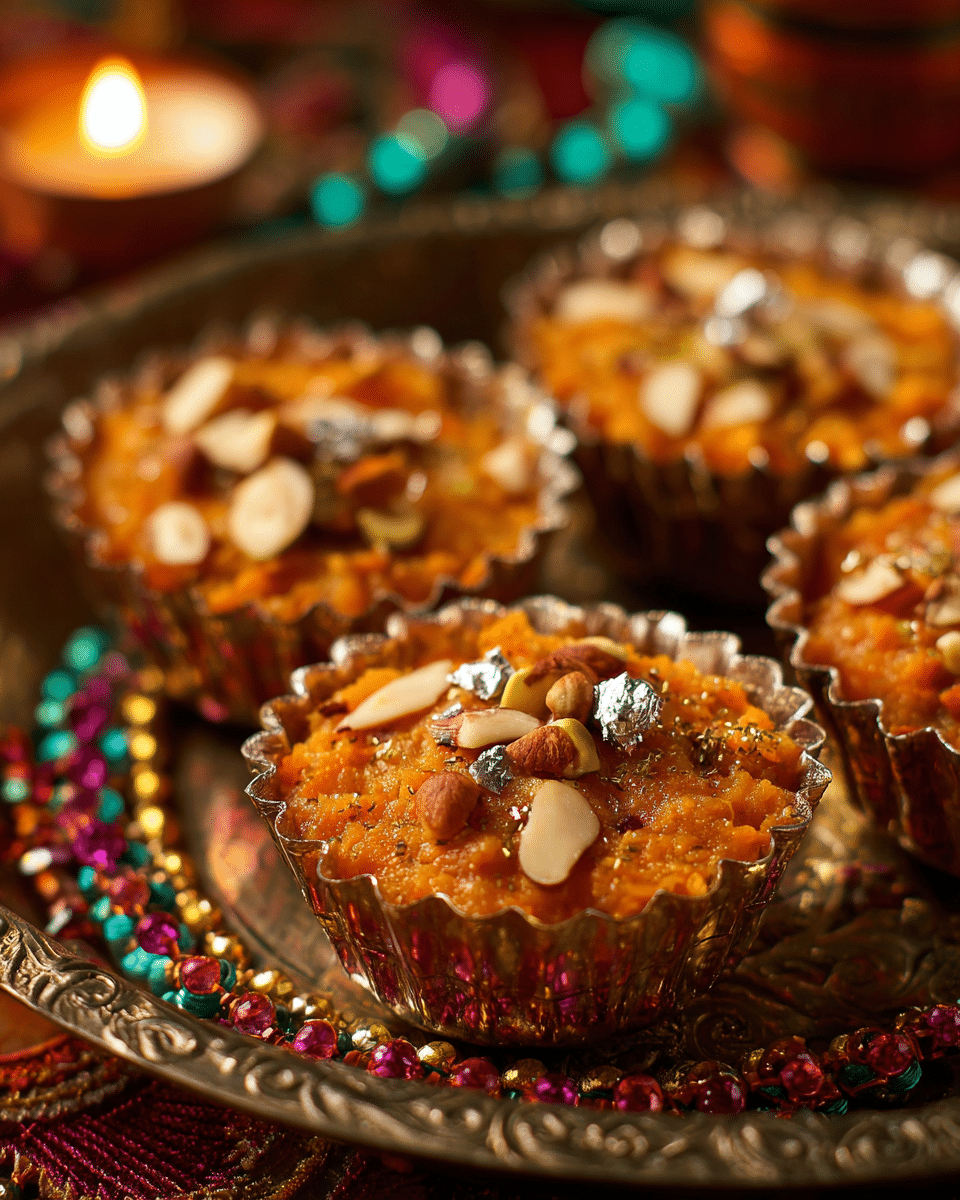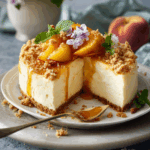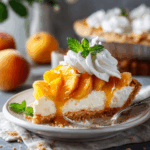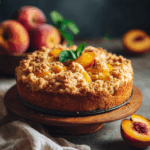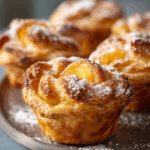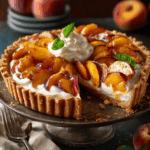Gajar Halwa Cups are a delightful twist on the traditional Indian carrot dessert, specially crafted for festive occasions like Raksha Bandhan. These cups are made by slow-cooking grated carrots in milk and ghee until they turn rich and aromatic, then setting them into festive molds or serving dishes. The addition of cardamom, nuts, and a touch of condensed milk adds depth and richness, while the cup presentation gives it a modern, elegant flair.
FULL RECIPE
Ingredients
- 2 cups grated carrots (preferably red or orange variety)
- 1 cup full-fat milk
- ¼ cup condensed milk
- 2 tablespoons ghee
- ¼ cup sugar (adjust to taste)
- ¼ teaspoon cardamom powder
- 2 tablespoons chopped cashews
- 2 tablespoons chopped almonds
- 1 tablespoon raisins
- A few strands of saffron (optional)
- Silver foil or decorative cups for serving
Directions
- Heat 1 tablespoon ghee in a non-stick pan over medium flame. Add cashews, almonds, and raisins. Sauté until golden and set aside.
- In the same pan, add another tablespoon of ghee. Add grated carrots and sauté for 5–7 minutes until they soften and the raw smell disappears.
- Pour in the milk and cook the mixture on low heat, stirring occasionally, until the milk is absorbed and the carrots are fully cooked (about 10–12 minutes).
- Add condensed milk and mix well. Continue cooking until the mixture thickens and starts leaving the sides of the pan.
- Stir in sugar and cardamom powder. Mix and cook for another 5 minutes until the halwa becomes glossy and rich.
- Add the sautéed nuts and raisins, saving a few for garnish. Mix well and turn off the heat.
- While still warm, spoon the halwa into small decorative cups or silicone molds. Press gently to shape.
- Garnish with reserved nuts and, optionally, a saffron strand or edible silver foil for a festive look.
- Allow to set for at least 15–20 minutes before serving warm or at room temperature.
Nutrition Facts
- Calories: 210 kcal
- Protein: 4g
- Carbohydrates: 24g
- Sugars: 17g
- Fat: 11g
- Saturated Fat: 5g
- Fiber: 2g
- Calcium: 90mg
- Iron: 0.7mg
- Potassium: 280mg
- Cholesterol: 18mg
The Cultural Significance of Gajar Halwa in Indian Festivals
Gajar Halwa holds a cherished place in Indian culinary traditions, especially during festivals and celebrations like Raksha Bandhan, Diwali, and Holi. Its bright orange color symbolizes auspiciousness and joy, making it a perfect festive dessert. The use of seasonal carrots during winter months ties the dish closely to agricultural cycles, adding a sense of locality and seasonality. Serving Gajar Halwa in individual cups elevates its presentation, making it ideal for gifting and sharing during family gatherings, reinforcing bonds and traditions.
Nutritional Benefits of Carrots in Gajar Halwa
Carrots are rich in beta-carotene, a precursor to vitamin A, which supports healthy vision, skin, and immune function. When cooked slowly in milk and ghee, these nutrients are more bioavailable, enhancing their absorption. Additionally, carrots provide dietary fiber that aids digestion, while the antioxidants in carrots contribute to reducing inflammation and promoting heart health. Although Gajar Halwa is a dessert, it incorporates these healthful elements, making it a more balanced indulgence compared to many other sweets.
The Role of Milk and Ghee in Enhancing Flavor and Nutrition
Milk lends creaminess and richness to Gajar Halwa, while ghee adds a nutty aroma and smooth texture. Ghee is a traditional Indian clarified butter known for its high smoke point and beneficial fatty acids, which support brain and heart health when consumed in moderation. The combination of milk and ghee not only enriches the halwa’s taste but also improves its nutritional profile by supplying calcium, vitamins D and K2, and healthy fats that aid in vitamin absorption.
The Importance of Cardamom and Nuts in Flavor Profile
Cardamom, often called the “queen of spices,” imparts a warm, fragrant note that perfectly complements the natural sweetness of carrots and sugar. It also aids digestion and adds a refreshing aftertaste. The toasted nuts—cashews, almonds, and raisins—provide textural contrast and additional layers of flavor. These ingredients contribute essential minerals like magnesium and healthy fats, making the dessert both tasty and slightly more nourishing.
Variations and Adaptations of Gajar Halwa Cups
While the classic recipe involves milk, sugar, and ghee, numerous variations exist to suit dietary preferences and regional tastes. Some versions incorporate khoya (reduced milk solids) or paneer for added richness. Vegan adaptations substitute milk with coconut or almond milk and ghee with coconut oil or vegan butter. To reduce sugar, natural sweeteners like jaggery or maple syrup can be used. Additionally, incorporating spices like saffron or nutmeg can offer subtle flavor shifts, while serving the halwa in edible cups made from nuts or coconut shells adds an eco-friendly and creative twist.
Serving Suggestions and Presentation Ideas
Gajar Halwa Cups can be served warm or at room temperature, depending on preference. Garnishing with edible silver foil, chopped pistachios, or rose petals can enhance the visual appeal, making it ideal for festive tables. Pairing it with chilled rabri (sweetened condensed milk) or a scoop of vanilla ice cream adds temperature contrast and richness. For a modern presentation, layering halwa with whipped cream or yogurt in transparent cups can create a parfait-like dessert that appeals to all ages.
Pairing Gajar Halwa with Beverages
Traditional Indian chai, with its spicy and milky profile, complements the sweetness and texture of Gajar Halwa perfectly. The warmth and slight bitterness of chai balance the dessert’s richness. Alternatively, rose-flavored lassi or cardamom-infused coffee can serve as refreshing companions. For festive occasions, a light sparkling wine or a mild dessert wine can elevate the experience, contrasting the sweetness with subtle acidity and bubbles.
Storage Tips to Maintain Freshness and Flavor
Gajar Halwa cups should be stored in airtight containers to preserve moisture and prevent absorption of odors from other foods. They can be refrigerated for up to 4–5 days and gently reheated before serving to restore their soft texture. For longer storage, freezing in portioned cups is possible, though the texture may slightly change upon thawing. To maintain optimal taste, avoid overcooking during preparation, which can dry out the halwa and affect its creaminess when reheated.
Health Considerations and Moderation
Despite containing nutrient-rich ingredients, Gajar Halwa remains a dessert high in sugars and fats, which should be enjoyed in moderation. Individuals managing blood sugar levels or calorie intake should consider portion control or alternative recipes with reduced sugar and fat content. Incorporating more nuts and reducing added sugar can make the dish healthier. The natural sweetness of carrots helps reduce the need for excess sugar, making it a better alternative to heavily processed desserts.
The Evolution of Traditional Desserts in Modern Cuisine
Gajar Halwa Cups represent how traditional recipes evolve to fit contemporary dining preferences, emphasizing portion control, presentation, and fusion of flavors. This trend helps keep cultural foods relevant among younger generations and global audiences. The cup format also caters to ease of serving at parties or as part of dessert platters. It reflects a larger movement in Indian cuisine, where chefs blend authenticity with innovation, making heritage dishes more accessible and exciting.
Conclusion
Gajar Halwa Cups beautifully blend tradition with modernity, celebrating the rich flavors and cultural significance of this beloved Indian dessert in an elegant, shareable form. Their vibrant color, fragrant spices, and comforting texture make them a festive favorite, especially during Raksha Bandhan and other celebrations. While indulgent, the dish carries the nutritional benefits of carrots and wholesome ingredients like milk and nuts. Whether served warm or chilled, in traditional or creative variations, Gajar Halwa Cups remain a delicious reminder of Indian culinary heritage and the joy of sharing sweet moments with loved ones.

